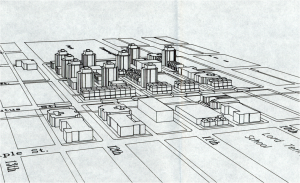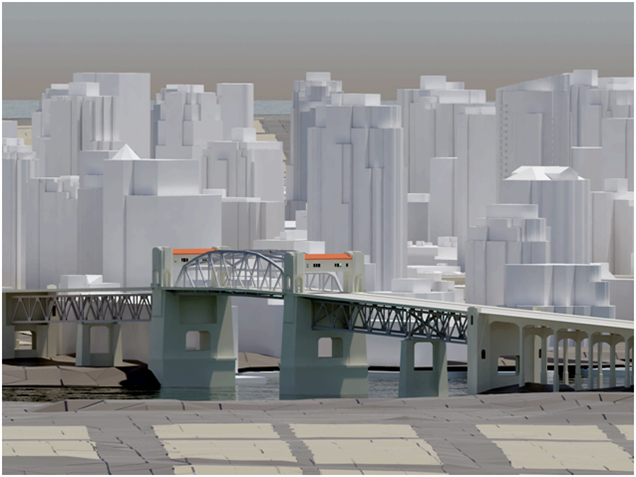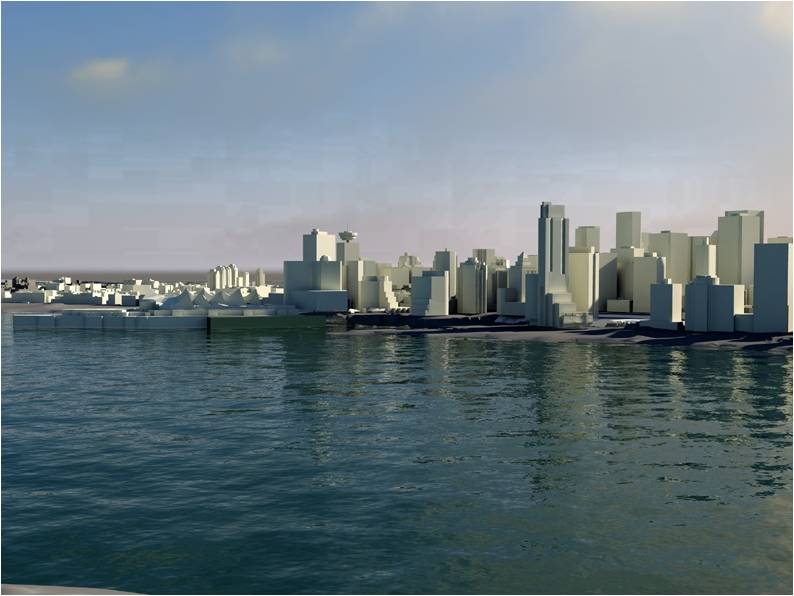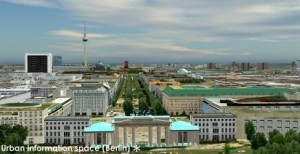Last Call for Papers
Submission deadline extended to 30 April 2009
Digital Cities 6: Concepts, Methods and Systems of Urban Informatics
Workshop at the 4th International Conference on Communities and Technologies
Penn State, USA, 24th June 2009
April 30th, 2009 Workshop position papers due
May 18th, 2009 Author notifications sent
June 24th, 2009 Workshop
http://cct2009.ist.psu.edu/workshops.cfm
Keynote speaker
We are happy to announce that Professor Carlo Ratti, Director of the SENSEable City Lab at MIT (senseable.mit.edu), will deliver the keynote presentation at Digital Cities 6.
The real-time city is now real! The increasing deployment of sensors and hand-held electronics in recent years is allowing a new approach to the study of the built environment. The way we describe and understand cities is being radically transformed – alongside the tools we use to design them and impact on their physical structure. Studying these changes from a critical point of view and anticipating them is the goal of the SENSEable City Laboratory, a new research initiative at the Massachusetts Institute of Technology.
1 Theme
Transport grids, building complexes, information and communication technology, social networks and people form the bones, organs, muscles, nerves and cell tissue of a city. Studying the organisation and structure of these systems may seem straightforward at first, since there are visible artifacts and tangible objects that we can observe and examine. We can count the number of cars on the road, the number of apartments in a building, the number of emails on our computer screens and the number of profiles on social networking sites. We could also qualify these observations by recording the make and model of cars, the size and price of apartments, the sender and recipient of emails and the content and popularity of online profiles. This approach would potentially produce a large amount of data and render a detailed map of various levels of a city’s infrastructure, but a large quantity of detail does not necessarily result in a great quality (and clarity) of meaning. How do we analyse this data to better understand the ‘city’ as an organism? How do the cells of the city cluster to form tissue and organs, and how do various systems communicate and interact with each other? And, recognising that we ourselves are cells living in cities as active agents, how do we evaluate the effectiveness and efficiency of the processes we observe in order to plan, design and develop more livable cities?
A macroscopic perspective of urban anatomy does not easily reveal those meticulous details which are necessary to help us understand and appreciate what Anthony Townsend calls the urban metabolism (Townsend, 2000), that is, the nutrients, capacities, processes and pace which nurture the city to keep it alive. Some of the fascination with human anatomy stems from the fact that a living body is more than the sum of its parts. Similarly, the city is more than the sum of its physical elements. Trying to get to the bottom of a city’s existence, urban anatomists have to become dissectors of urban infrastructure by trying to microscopically uncover the connections and interrelationships of city elements. Yet, this is anything but trivial for at least three reasons. First, time is a crucial factor. Many events that trigger urban processes involving multiple systems result in a timely interrelated response. A dissection by isolating one system from another, would cut the communication link between them and jeopardise the study of the wider process. The city comprises many of these real-time systems and requires approaches and tools to conduct real-time examinations. Second, the physical city is increasingly complemented with a virtual layer that digitally augments and enhances urban infrastructures by means of information and communication technology including mobile and wireless networks. This world, which Mitchell (1995) called the ‘city of bits,’ is invisible to the human eye, and we require instruments for live surgery to render the invisible visible. Third and most importantly, the ‘cells’ of the urban body, the lifeblood of cities, are the city dwellers who have a life of their own and who introduce human fuzziness and socio-cultural variables to the study of the city. The toolbox of what could be termed anthropological urban anatomy thus calls for research approaches that can differentiate (and break apart) a universally applicable model of ‘The City’ by being sensitive to individual circumstances, local characteristics and socio-cultural contexts.
Exploring these three challenges, this workshop looks at concepts, research methods and instruments that become the microscope of urban anatomy. We want to discuss urban informatics systems that provide real-time tools for examining the real-time city, to picture the invisible and to zoom into a fine-grained resolution of urban environments that reveal the depth and contextual nuances of urban metabolism processes at work.
2 Topics
Relevant workshop topics include but are not limited to the following:
• Civic and community engagement strategies to support urban planning
• Public sphere, participation and online deliberation systems
• Urban e-government, e-governance, e-participation, e-democracy approaches
• u-City: Ubiquitous computing, pervasive technology, wireless internet and mobile applications
• Locative media, navigation and space
• Urban informatics design and development methods and epistemologies
• Multi-format user-generated content (narratives, photos, videos, multimedia)
• Neogeography and 3D virtual environments for urban design and planning
• Simulations to reproduce and analyse complex social phenomena and city systems
• Social networking, collective intelligence and crowd sourcing in the urban context
• Environmental, economic and social sustainability
• Citizen science
• Access, trust, privacy, safety and surveillance
• Implications for residential architecture and the design of cities and public spaces
• Ethical considerations scrutinizing the assumptions behind urban informatics
3 Organisation and Submission Details
This is a full day workshop. We will start off with a keynote address by an eminent speaker. Rather than formal conference-style paper presentations, we will follow the successful peer interview format and ask each participant to interview another contributing author. Pairs will be assigned in advance to prepare questions and engage with the paper. After lunch, there will be a range of group activities and a closing plenary discussion at the end. The workshop can accommodate a maximum number of between 25 to 30 participants including presenters in order to provide an environment that is conducive to debate and interaction.
We are interested in three types of contributions:
Concepts: Essay style papers discussing theoretical and conceptual ideas and innovation within a cross-disciplinary framework.
Methods: Papers reporting on novel approaches in the area of urban informatics, e.g. network action research, shared visual ethnography, urban probes, cross-disciplinary methods, etc.
Systems: Reports of systems and case studies that ground findings in practice and experience.
Prospective participants are asked to submit a position paper (2-4 pages total, in English, ACM SIGCHI 2-column format, same as for the C&T full papers) related to one of the workshop topics. Each submission should also include a short biography stating the author’s background and motivation for attending the workshop. Workshop position papers are due on April 30th, 2009 and will be reviewed and selected by the organisers with the support from an international program committee. Accepted authors will be notified by May 18th, 2009 – to leave enough time to qualify for the early bird conference registration. The acceptance of a workshop position paper implies that at least one of the authors will register for both the workshop and the Communities & Technologies 2009 conference. The workshop takes place on June 24th, 2009. After the workshop, selected contributors are invited to submit a full paper by October 1st, 2009. Full papers will undergo double blind peer review before being published. Arrangements for an edited book or a special issue of a relevant international journal are currently underway.
Template:
http://www.acm.org/sigs/publications/proceedings-templates
4 Bibliography
Each Digital Cities workshop has produced an edited volume containing selected workshop papers and other invited contributions as follows:
Digital Cities 5 — Foth, M. (Ed.) (2009). Handbook of Research on Urban Informatics: The Practice and Promise of the Real-Time City. Hershey, PA: Information Science Reference, IGI Global.
Digital Cities 4 — Aurigi, A., & De Cindio, F. (Eds.). (2008). Augmented Urban Spaces: Articulating the Physical and Electronic City. Aldershot, UK: Ashgate.
Digital Cities 3 — van den Besselaar, P., & Koizumi, S. (Eds.). (2005). Digital Cities 3: Information Technologies for Social Capital (Lecture Notes in Computer Science No. 3081). Heidelberg, Germany: Springer.
Digital Cities 2 — Tanabe, M., van den Besselaar, P., & Ishida, T. (Eds.). (2002). Digital Cities 2: Computational and Sociological Approaches (Lecture Notes in Computer Science No. 2362). Heidelberg, Germany: Springer.
Digital Cities 1 — Ishida, T., & Isbister, K. (Eds.). (2000). Digital Cities: Technologies, Experiences, and Future Perspectives (Lecture Notes in Computer Science No. 1765). Heidelberg, Germany: Springer.
5 Organisers
Marcus Foth
Senior Research Fellow, Queensland University of Technology, Brisbane, Australia
Laura Forlano
Kauffman Fellow in Law, Yale Law School, New Haven, USA
Hiromitsu Hattori
Assistant Professor, Department of Social Informatics, Kyoto University, Japan




